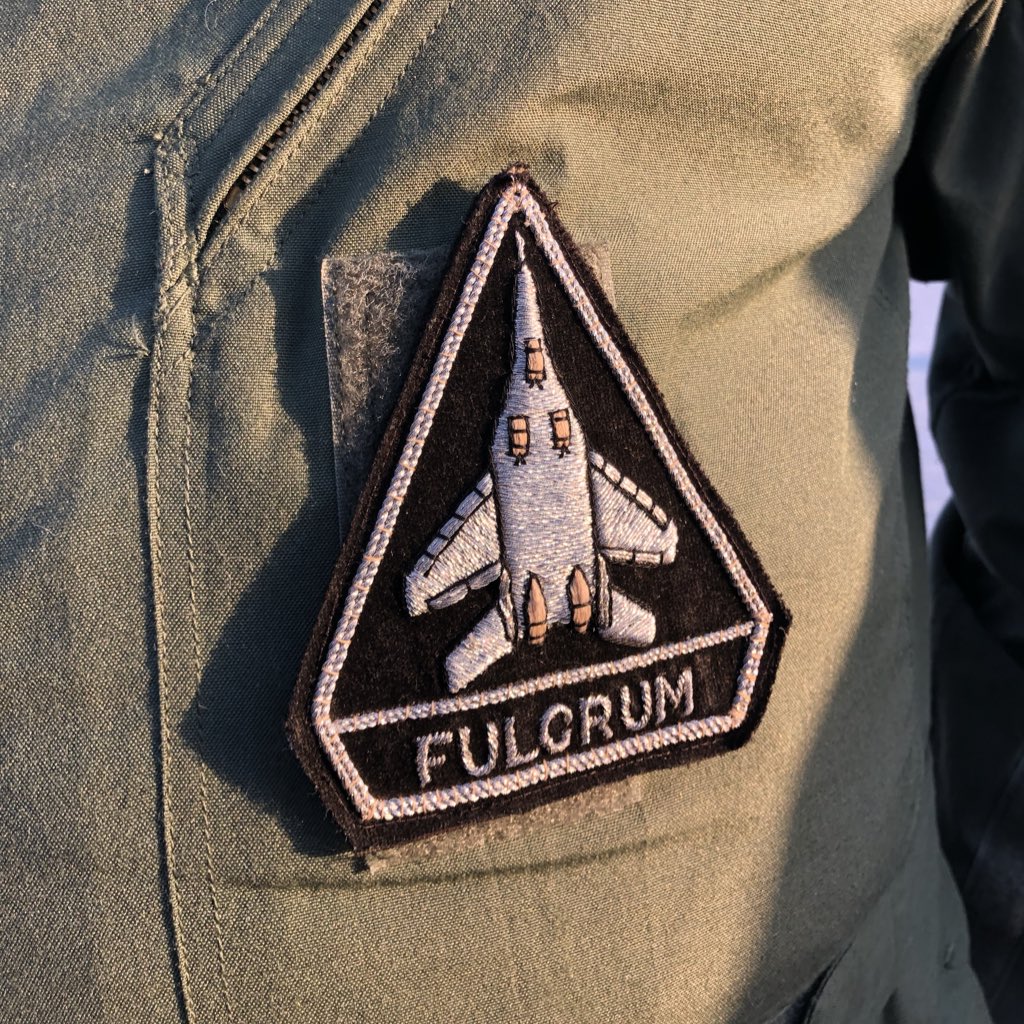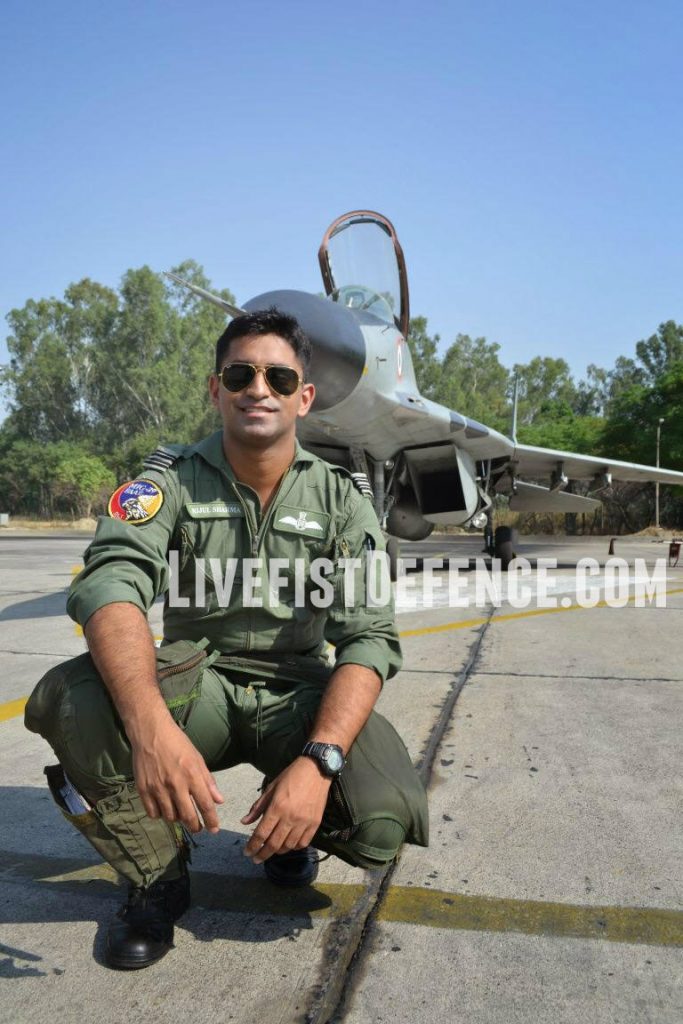
PHOTO OF AIR MARSHAL CHAUDHARI BY SHIV AROOR
Air Marshal Vivek Ram Chaudhari, ‘Chau’, couldn’t possibly be taking charge of the Indian Air Force’s operationally supreme Western Air Command (WAC) at a more eventful time. He inherits a force that is overwhelmingly in operational mode — war readiness really — with nearly every combat squadron that will be under his charge from August 1 either either actively patrolling or ready to counter potential hostile Chinese actions in the northern sector of Ladakh. The WAC has been on heightened alert for over a year now since the airstrikes in Pakistan’s Balakot last year and ensuing tensions that have prevailed. As it happens, the Command is getting a boss with more than his share of handling danger in service.
The Air Marshal, who likes to fly as often as he can, last flew in combat during the Kargil War in 1999. But it was an incident in 26 years ago that gave the officer his first real close call.
In 1994, Air Marshal Chaudhari, then a Squadron Leader, was Flight Commander of the 28 Squadron ‘First Supersonics’, a MiG-29 squadron based at the time in Pune. The MiG-29 jets were only a few years old in Indian service. Taking off on a test flight one day, Squadron Leader Chaudhari’s fighter canopy blew right off during a Mach run. Faced with a critical emergency that could have compelled an ejection, the officer is understood to have lowered his seat to the maximum extent possible to minimise wind blast, and managed with some skill to land the aircraft. He was unharmed in the incident.
Investigations at the time showed the MiG-29 canopy had not locked properly despite a cockpit indication confirming it was. It later was found that laid down standard operating procedures (SOP) and guidelines for canopy plunger and microswitch adjustments had not been followed by airframe ground crew, leading to the dangerous, erroneous ‘locked’ confirmation.

One of the patches Air Marshal Chaudhari wears on his flightsuit | PHOTO/SHIV AROOR
The 28 Squadron moved out of Pune to Jamnagar, Gujarat a few years later. In 2001, two years after flying in the Kargil War, Chaudhari was back in the squadron, this time as Commanding Officer, running the unit during another crucial phase — Operation Parakram, the war-like forward mobilisation that followed a Pakistan-sponsored terror attack on India’s Parliament in 2001.. In 2004, he would be decorated with a Vayu Sena Medal (Devotion to duty) for his leadership during that period.
According to the award citation, ‘During ‘Op Parakram’, his Sqn was tasked to deploy at three locations as per the war plans. With only nine pilots and one trainer ac available, he alternated between the bases so as to complete the revalidation of augmented pilots in record time and become operational at the earliest from all three locations. While carrying out day and night Operational Readiness Platform (ORP) duties, he flew over 150 sorties and took part in all exercises. Being the only QF1 at one base, he also undertook the conversion of three under training pilots. In consultation with Tactics and Air Combat Development and Training Establishment (TACDE), he helped in development of tactics for Beyond Visual Range (BVR) Vs BVR missile engagements and interception of Unmanned Aerial Vehicles. While remaining deployed, his Sqn provided Dissimilar Air Combat Training to all the MiG-21 Sqns within the command, thereby enhancing their operational status.
Since 2015, he has been Commodore Commandant of the squadron he once commanded.

Squadron Leader Rijul Sharma with a MiG-29 at Jamnagar
22 years after the canopy incident, another young pilot from the 28 Squadron would have a similar close call. In June 2016, Squadron Leader Rijul Sharma would suffer a shattered, blown off canopy during the supersonic phase of a similar test flight. The account would go on to be a chapter in (book plug alert!) Livefist editor Shiv Aroor’s bestselling first volume of the India’s Most Fearless series.
For ‘Chau’, the veteran MiG-29 pilot, there’s plenty incidentally happening with that aircraft type as he takes over. MiG-29s from Jamnagar as well as Adampur are registering their presence prominently in combat patrols over Ladakh amidst the current standoff with China. Last week, the Indian Navy moved a detachment of MiG-29K carrier deck fighters to a northern air base too to join the combat readiness effort.
Meanwhile, earlier this month, the Indian MoD approved plans to purchase 21 more MiG-29 UPG jets from Russia to add to the current fleet of about 60 jets, in addition to a fleet-wide upgrade that will give the jets the ability to deploy a wider array of weapons. A recent Livefist interview with aviation researcher Angad Singh throws detailed light on this, and can be viewed in full here.
Apart from the emerging operational situation on the China front, Air Marshal Chaudhuri will also oversee the operationalisation of the IAF’s first Rafale jets, five of which which arrive on July 29, two days before he takes over his new post. In February last year, days before the Indian Air Force conducted punitive cross border air strikes in Pakistan’s Balakot, Air Marshal Chaudhuri flew a Rafale at the Aero India show in Bengaluru, an aircraft he knows inside out. As Deputy Chief, he had led negotiations that resulted in the September 2016 deal for 36 jets.
from Livefist https://ift.tt/3hCIsWZ
via Live Defense
No comments: